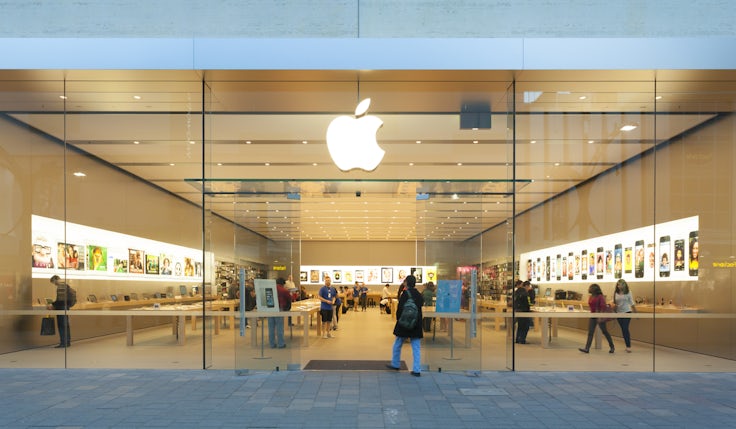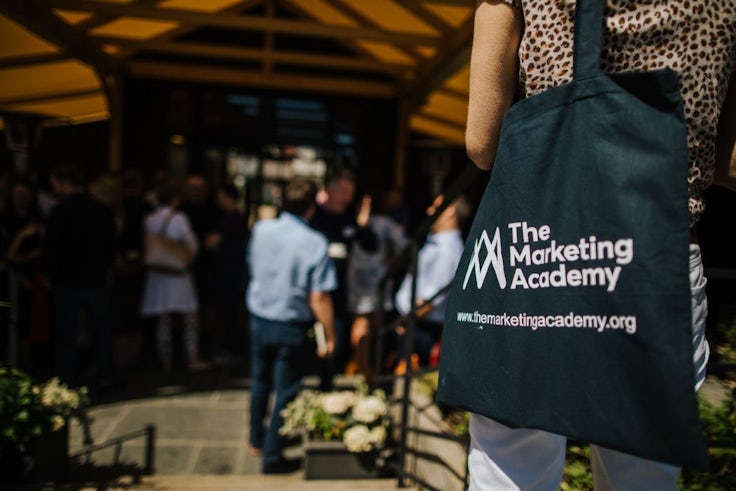Why one sportswear group is hiring 60 marketers to fuel its growth drive
Marketing is at the heart of a 100-person recruitment drive at Pentland Brands, which is intended to transform the fashion and sportswear company into a true portfolio business.

“Pentland is quite a well-kept secret. It’s not a consumer facing organisation, but when you talk to people about the brands they know them,” says the company’s global head of marketing, Sean Hastings.
A third-generation family business, Pentland Brands is the company behind a variety of well known names in the sports, outdoor and fashion sectors, including Berghaus, Canterbury of New Zealand, Speedo, Ellesse and Mitre. The company is also the global licensee for Ted Baker footwear and the UK licensee for Kickers, while Pentland Group, the global brand management company which Pentland Brands sits within, owns a 57% stake in retail chain JD Sports Fashion, which operates over 1,300 stores across 12 countries.
Now, Pentland Brands is embarking on a large-scale recruitment drive to fill 100 roles across its marketing, product and sales functions. The company is looking to recruit 50 to 60 people specifically in marketing, spanning brand management, digital specialists, user experience, optimisation, analytics, product design, innovation and creative roles, as well as within Pentland’s internal agency. The new hires will join a team of more than 1,700 employees worldwide.
“There’s a real mix [of positions] from very strategic roles to operational and activation. There are very analytical roles through to very creative. It’s an exciting time because we’ve got lots of really good people internally and this gives us the opportunity to mix things up a little bit and bring in external talent as well,” Hastings explains.
The focus on recruitment is the result of a two and a half year programme to “professionalise” Pentland Brands’ consumer organisation in its bid to operate more like a portfolio business. The idea is to leverage the scale of the Pentland organisation to grow its brands faster by making changes to both the structures and ways of working.
It’s not unusual for us to have people around the table within our brand teams who have come from totally different backgrounds, but that makes us better because it challenges what we do.
Sean Hastings, Pentland Brands
During the second half of last year Pentland began reshaping the business. In November the company made a series of redundancies to “simplify” its structure from a wholesale perspective by creating a single touchpoint for each retailer.
This process involved rationalising the number of sites Pentland operates across the UK, a legacy from the acquisitions it has made over the past three decades.
Sportswear brands Canterbury of New Zealand and Mitre relocated from Stockport and Wakefield to Pentland’s Nottingham office, which is a hub for swimwear brand Speedo. Outerwear brand Berghaus continues to be run out of Sunderland, while the rest of Pentland’s portfolio operates from its head office in Finchley, North London.
“This was about the longer time piece around how we become a portfolio business and get the brands growing more quickly using that scale. There were some hard decisions in there. We were operating across different sites in the UK and we took the decision to take that down to three,” Hastings explains.
“Part of the what we want to do is build people’s marketing careers by moving them within brands and functions. It’s easier to build that skillset across fewer sites.”

While there are dedicated brand teams led by brand directors, seen as custodians of the brand heritage and DNA, some departments such as insight and market intelligence are cross-functional.
“We also brought together our innovation teams because what we do within those we can leverage across lots of the brands. How we operate digitally is done at a group level as well, but all those people sit with the brands and are a part of those brand teams, they just report differently,” Hastings explains.
“We’re trying to protect the expertise and the brand DNA, but we’re also looking to recruit people from different industries, with different backgrounds who have a real diverse point of view that matters to the consumers using our brands. It’s not unusual for us to have people around the table within our brand teams who have come from totally different backgrounds, but that makes us better because it challenges what we do.“
READ MORE: How to build a marketing team from scratch
Global to local
A global business, Pentland Brands operates in over 190 markets worldwide, with strategy largely driven from its headquarters in the UK. The company boasts teams across France, Hong Kong, China, India, Thailand, Indonesia, Vietnam, Australia, New Zealand and North America.
“We try to have a consistent global position and strategy, but understand that with the brands and the categories we are in there might be a different way of executing that locally and we just see that as a sensible way of working,” Hastings explains.
He describes Pentland as a “very creative business” from its in-house agency to the design and innovation teams, mixing specialists with real brand generalists and product managers. Reflecting on the spread of the company across the UK, Hastings believes it is a good thing the business operates from more than one site.
“As we move to become a portfolio business, the bit I think is really exciting is the fact it opens up so many more career opportunities. Instead of looking in one location and at one brand, we are flexible, which allows people to think about opportunities for them that could be in different functions, different brands and locations,” he adds.
Pentland is keen to give new talent exposure to the wider business. The graduate schemes constantly rotate people between marketing and sales roles, while the company has developed its own internal marketing academy. The academy is focused on breeding consistency within marketing, from strategic planning and tactics to how the team delivers briefs and even consistency in people’s roles.

“We bring people in and we want them to be able to make a meaningful difference to our brands, but without having to learn different things when they move between brands,” Hasting explains.
“We’ve always done a lot of development, but we’ve never really formalised it. So within the marketing area we’ve been designing a programme of activity which will launch within the next couple of months. The thinking behind it is it’s not a classroom based thing. We are putting into place the capability programmes and the development to give people the chance to develop the skills on the job.”
The ambition is to get the entire consumer product and marketing division through the training, which spans close to 300 people across brand marketing, product, innovation and digital.
Internal meets external
Pentland Brands takes the view that the best work is achieved when a mix of internal expertise and external talent are around the table. This is the thinking behind the continued development of Pentland’s in-house agency, a 40 strong team spread across offices in London and Nottingham, where there is a hub working across the active brands. There is also a smaller team in Hong Kong which serves the company’s big growth markets in Asia, particularly China.
With access to Pentland’s fully functioning moving image and photographic studio, the agency works on everything from quick turnaround artwork and shots for its ecommerce sites to packaging design and big campaigns.
“It’s becoming trendy now to in-house stuff again, but we’ve always had a view that there are certain things we can build knowledge on and expertise, certain idiosyncrasies with our brands that the agency know because they’ve worked on those brands and they can cross pollinate across a lot of the brands as well,” Hastings says.
“The important thing we’ve done over the past few years is bring some consistency to how we work and really focus our marketing teams on being clear about the opportunity they’re going after, the problem they’re trying to solve and really doing a good job of putting that into a clear brief.”
READ MORE: Lucozade sets up in-house agency to make its marketing work harder
He explains that the mix of internal and external capabilities helps Pentland avoid complacency as the diversity creates tension, which drives the most exciting results.
During this current period of transformation marketing will take on greater significance, as Pentland focuses on telling brand stories that matter to consumers. This strategy will prevent a “race to the bottom” mentality says Hastings, who argues that brands need to demonstrate their point of difference or be prepared to become irrelevant incredibly quickly.
“If you look at the moment, the need in the Western world is to get people to be more active and if you look at some of the challenges around mental health and social inclusion, the big trends involve getting people out there and connected,” he concludes.
“Our brands are right at the centre of that. And that’s an incredibly exciting thing for somebody within the marketing or creative fields.”







